Was Cincinnati Zoo right in killing Harambe? The question still remains 7 years after Harambe’s controversial and tragic death.
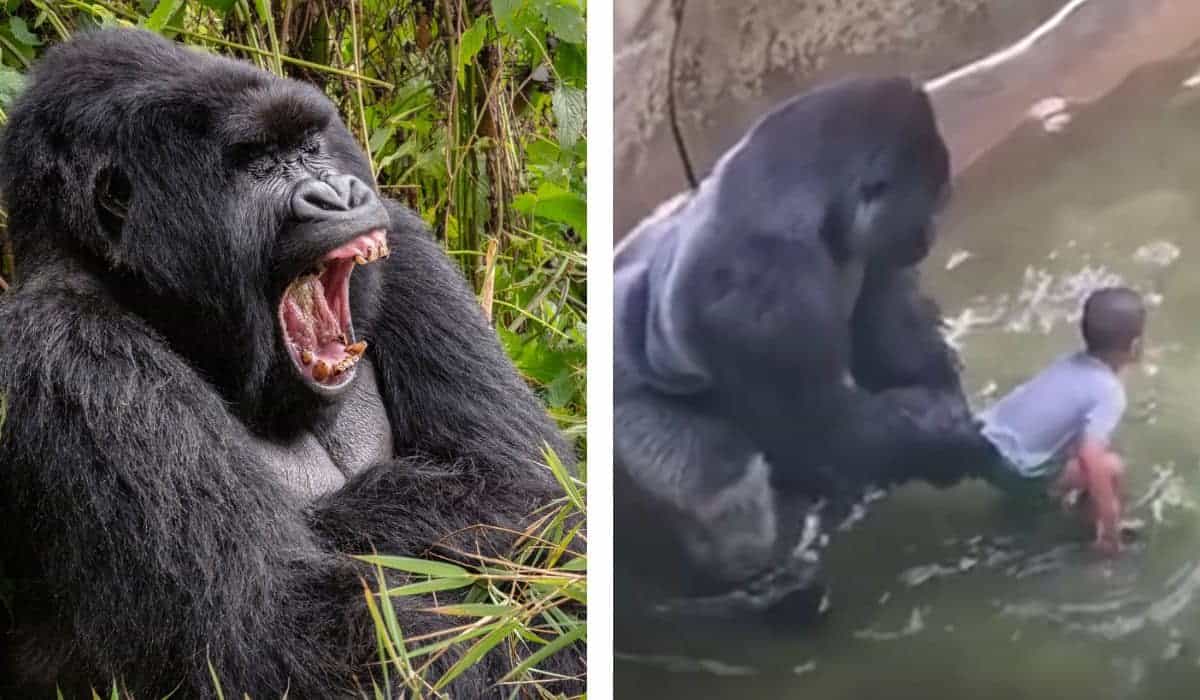
The tragic killing of Harambe, a 17-year-old western lowland gorilla at the Cincinnati Zoo, sparked a global debate that transcended the incident itself.
The event, captured on video and widely shared, led to a firestorm of public outrage, raising profound questions about the ethics of animal captivity.
Was the zoo’s decision to kill Harambe justified? Could other measures have been taken? The incident opened a Pandora’s box of issues, which are just as relevant 7 years after his death.
Join us as we explore the layers of complexity in a case that continues to resonate and challenge our understanding of our fellow creatures.
Key Points
- Harambe’s killing at Cincinnati Zoo ignited global debate and outrage over animal captivity and ethics.
- A Zookeeper explained Harambe’s behavior as intimidating, not protective, justifying the decision to kill.
- Tranquilizer was not viable; it would have taken too long, risking further danger to the child.
- Texas zookeeper who raised Harambe mourned his death, illustrating deep human-animal bonds.
- Captive gorillas face issues like high infant mortality, heart disease, and abnormal behaviors, highlighting captivity’s unnatural conditions.
Getting To Know Harambe
Harambe, a western lowland gorilla, was born into captivity and became a symbol of the complex relationship between humans and nonhuman animals.
Raised at the Gladys Porter Zoo in Texas, he was known for his intelligence and nurturing nature. Harambe often cared for his younger siblings, displaying a gentle and compassionate side. His upbringing involved lots of human interaction, with the facilities director taking him home to feed and diaper him.
At the time of his death, Harambe was 17 years old, having celebrated his birthday just a day before the tragic incident. He was a magnificent specimen, weighing 440 pounds, indicative of the power and grace of his species.
The Event: Boy Falls Into Harambe’s Enclosure
Although you’re surely familiar with the event, considering the ensuing social media movement, let’s recap it:
On May 28, 2016, a young child accidentally stumbled into the enclosure of Harambe at the Cincinnati Zoo. In a video that quickly went viral, shows Harambe dragging and roughhousing with the child.
Fearing for the child’s safety, zoo employees made the decision to kill Harambe. The incident ignited a firestorm of controversy both locally and internationally. The zoo’s decision outraged people around the world. They argued that Harambe was just playing with the child or questioning why a tranquilizer dart wasn’t used. Others blamed the child’s mother for not keeping her child out of the enclosure.
Learn about the largest gorilla ever recorded here.
The Ensuing Public Outrage
The public outrage that ensued after the killing of Harambe was swift and intense. Many people questioned whether Cinnsinati Zoo was right and justified in killing Harambe.
The outrage extended into celebrity and meme culture, with famous individuals condemning Harambe’s death and the child’s mother becoming a target of online harassment. The zoo itself became a target of internet trolls, and it even briefly outpolled Green Party presidential candidate Jill Stein in summer 2016.
The public reaction was not only confined to anger and blame but also included vigils for Harambe. The intensity of the response forced a reconsideration of the relationship between human and animal life, with some seeing the choice to prioritize human life as not obvious. The incident became a symbol of broader debates about the ethics of animal rights and human responsibilities.
Zookeeper Explains What Harambes Behavior Indicated – and Why Killing Him Was Justified
A former zookeeper provided insight into Harambe’s behavior during the incident at the Cincinnati Zoo.
Contrary to some public opinions that Harambe was trying to protect the child, she explained that the gorilla’s actions were more about positioning the child for his own displaying purposes. Male gorillas often perform elaborate displays when agitated, dragging objects to intimidate.Harambe’s tight lips and posturing were indicative of this behavior, not an attempt to care for the child.
She likewise outlined why the option of using a tranquilizer was not viable for several reasons. A tranquilizer would have taken too long to immobilize Harambe, potentially allowing him to injure the child in the process. Additionally, if immobilized in the water, Harambe could have fallen on the child and trapped him, drowning him in the process.
Zookeeper Mourns Death of Harambe
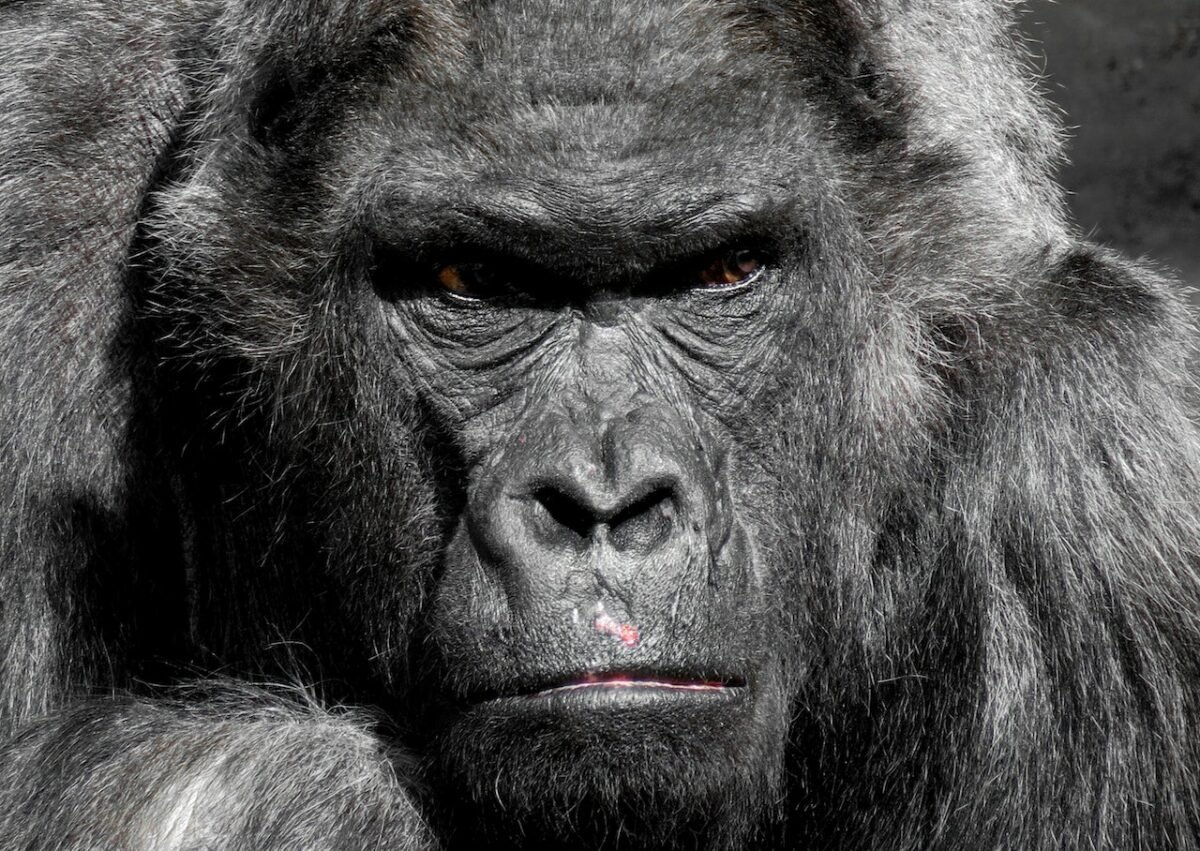
Jerry Stones, a Texas zookeeper who raised Harambe, mourned the gorilla’s death as akin to losing a family member. In a press conference, Stones described his close relationship with Harambe, caring for him like a human baby.
He emphasized Harambe’s intelligence, inquisitiveness, and nurturing behavior towards his siblings. Stones’ profound connection with Harambe illustrates the deep emotional bonds that can be formed between humans and nonhuman animals.
Such relationships challenge conventional distinctions between human rights and animal rights, raising questions about the ethical issues of captive animals.
Issues In Captive Gorillas
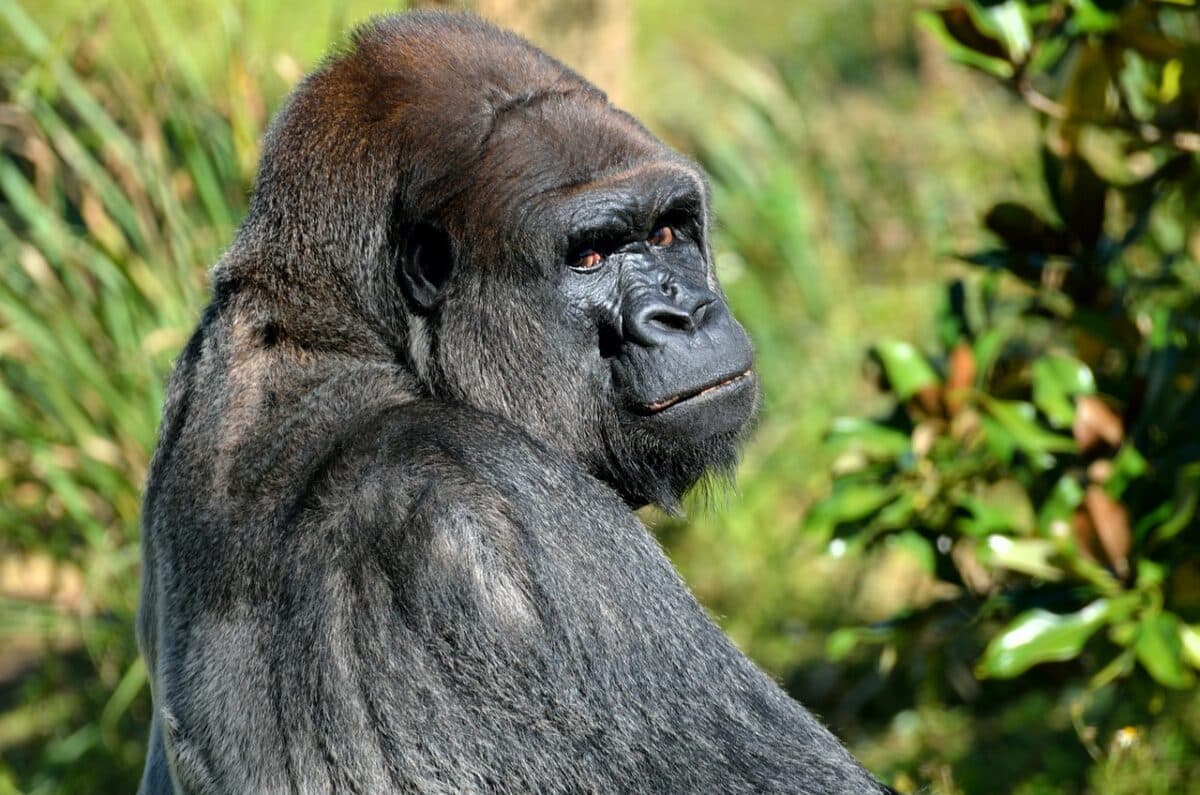
The incident prompted many to question the conditions under which animals are kept in zoos. Studies have proven again and again the negative physiological and psychological effects on animals in captivity.
Here are some prevalent issues of captive gorillas:
#1 High Infant Mortality and Rejection by Mothers
There is an alarming infant mortality rate among captive gorillas, with frequent rejection of babies by gorilla mothers.
In captivity, gorilla mothers often don’t know how to properly care for their infants, possibly due to the lack of exposure to parent-raised gorilla mothers. This leads to a high rate of infant deaths and the necessity for human intervention in raising the young.
#2 Heart Disease
A staggering 41% of captive gorillas in North American zoos succumb to heart disease. Potential causes include:
- Greater body fat due to limited exercise space
- Inadequate diets lacking essential wild plants
- The absence of natural anti-inflammatories found in their wild diet.
This highlights the difficulty in replicating the natural living conditions necessary for the gorillas’ health.
#3 Abnormal Behaviors
Captive gorillas often exhibit abnormal behaviors like regurgitation and reingestion. This may be a coping mechanism to reduce the stress of captivity or a result of inadequate diets and limited foraging behavior.
The prevalence of such behaviors underscores the unnatural and stressful conditions of captivity.
You might also enjoy: Meet the Elephant That Escaped From Zoo.
Was Cinnsinati Zoo Right In Killing Harambe: Conclusion
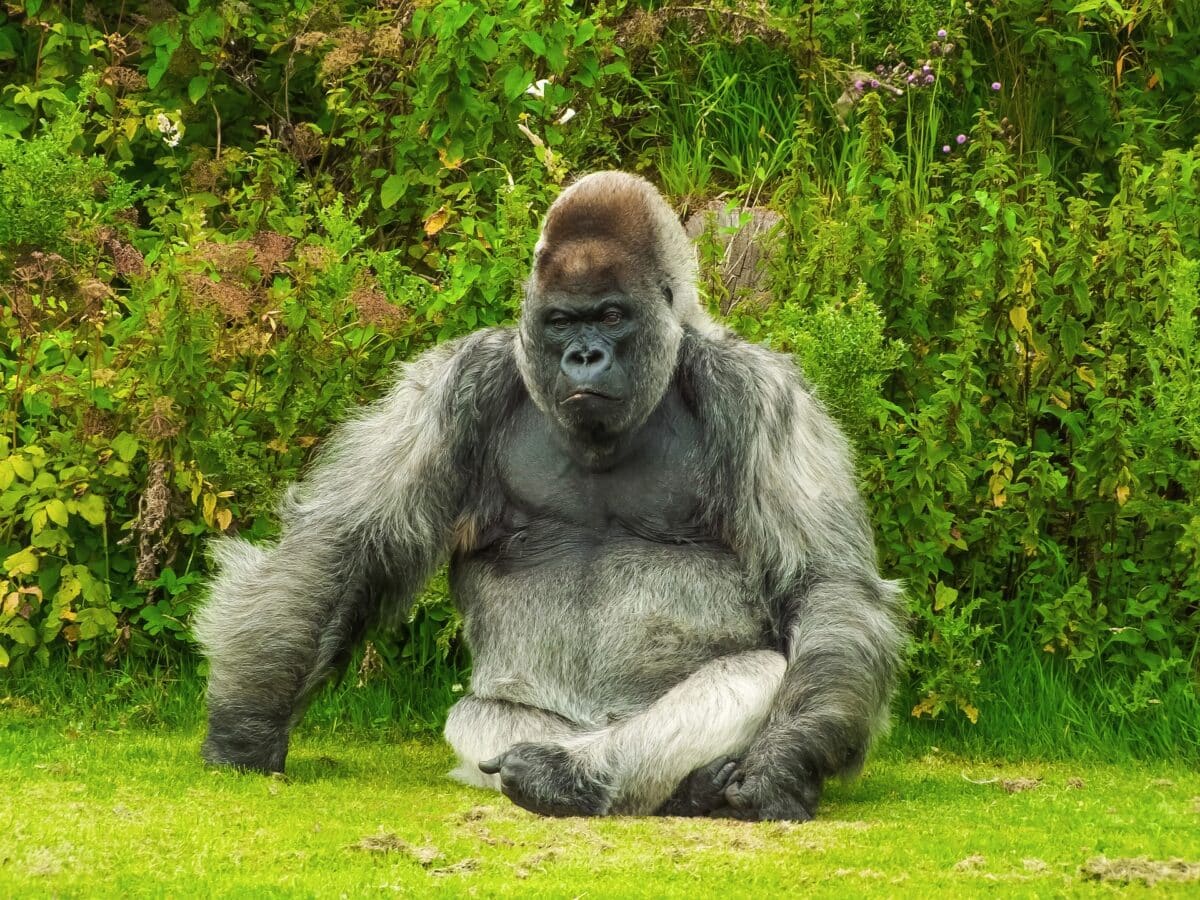
The killing of Harambe is more than a tragic incident; it’s a complex symbol of the ethical dilemmas surrounding animal captivity and human-animal relationships.
The event and its aftermath have forced us to confront uncomfortable questions about how we value and treat animals. From the immediate decision to kill Harambe to the broader issues of captive gorillas’ health and well-being, the case presents a multifaceted challenge to our understanding of our responsibilities towards other sentient beings.
The public’s passionate response, the insights of zoo professionals, and the mourning of those who knew Harambe all contribute to a narrative that continues to remain just as relevant today.
So what do you think? Was Cinnsinati right in killing Harambe? Let us know in the comments below!
Thank you for reading this article discussing whether Cinnsinati Zoo was right in killing Harambe! If you enjoyed this, you should also take a look at these articles:
- Grizzly Man Eaten Alive After Spending 13 Years Befriending Bears
- 46,000-Year-Old Worm Found In Siberian Permafrost and Successfully Revived
- Elephant Stops Truck To Steal Its Fave Snack: Sugarcane
- Magpie Bird Is Reunited with Her Dog Best Friend - April 24, 2024
- Dog Saves Another Dog From Drowning in Fish Pond - April 23, 2024
- Man On Motorbike Rescues Cat From Highway - April 23, 2024

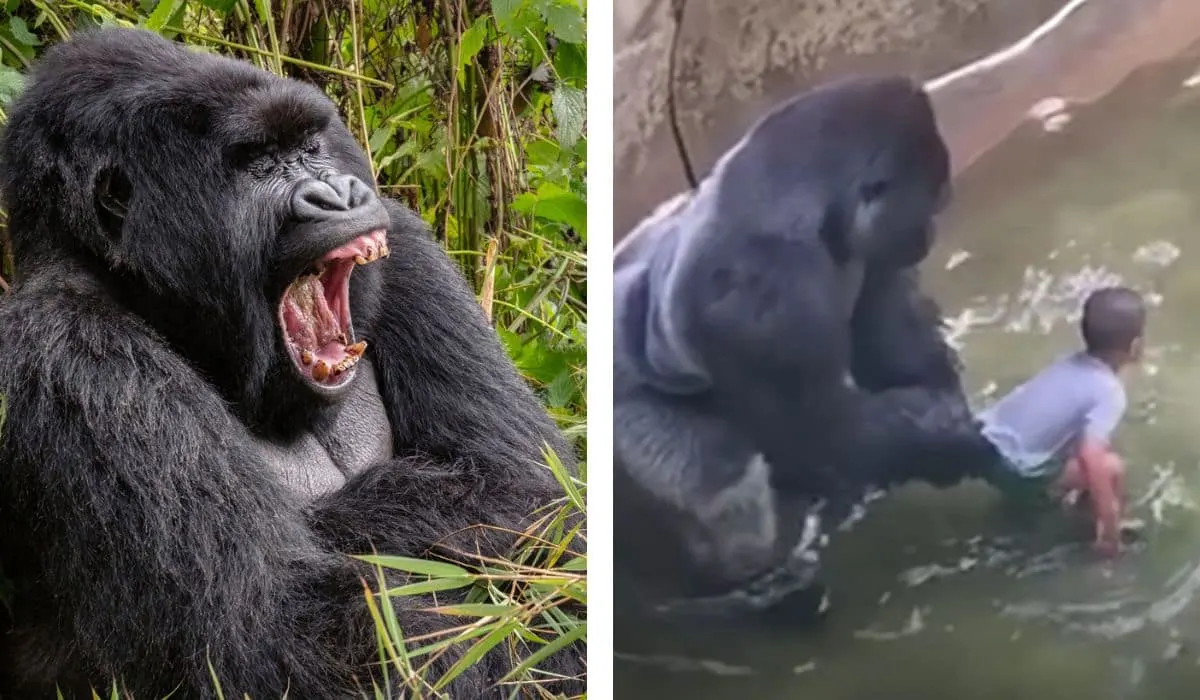

Marta
Sunday 24th of March 2024
As sad as it is, I think it shouldn't even be a question. No matter how stupid and irresponsible the mother was, that small child had to be rescued... With all necessary measures. I cannot even imagine what the child must have felt being dragged, away from mum, nobody coming straight away to help. Awful.... I blame people for the situation. But no surprise. We as residents of this planet are evil destroying ourselves... And we will continue till we're done... ☹️
Brittany
Saturday 23rd of March 2024
One living beings life isn't more important than another's. The mother of the boy should have been responsible. The responsibility and blame that he was leaning over to far or climbing over lies with the supposed adult he was with. There are many living beings that were here long before humans, gorillas being one, and we come along and take over there habitat. Humans act just like animals, except worse. We breed dogs, cats, other living beings and then kill them for over population or doing what is natural to them. I say humans are the worst because we know better, where other animals do not. No, I don't believe there was any justification to the killing of that living being.
Greg
Friday 22nd of March 2024
I find it hard to believe this question was even posed by the author. She obviously is not a parent and I worry about her humanity. You could debate the treatment of the gorilla, or the safety measures of the zoo, but not the decision to save the child's life. Even if a similar situation occurred in the wild and a human child was being attacked by a wild animal, it is right to kill the animal to save a child. It is so sad that this question was even posed.
Poodlefan2
Wednesday 8th of November 2023
Why is a human life always the priority ? When people are irresponsible, it shouldn't be! Because they don't look like us, Animals are looked with such contempt, they are really the true victims of racism!
Speaker OfTruth
Thursday 21st of March 2024
@Poodlefan2, You speak like a typical brainwashed simp sheeple libtard.
Keep voting for your pedophile traitor in chief.
Sandy
Wednesday 1st of November 2023
The zoo was wrong to kill Harembi.
Speaker OfTruth
Thursday 21st of March 2024
@Sandy,Do you know more than the zoo veterinarians, or are you just an ignorant libtard?